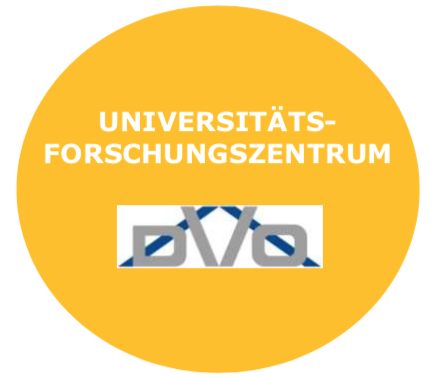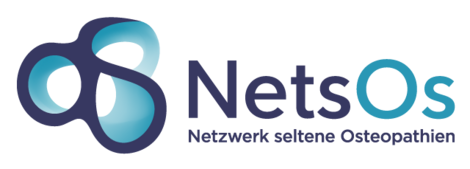Working group Siggelkow
Department of Gastroenterology, Gastrointestinal Oncology and Endocrinology
Research focus
The role of 11betaHSD1 11-beta Hydroxysteroid-Dehydrogenase Typ 1 for age related osteoporosis
Background: It is not known if endogenous glucocorticoids like cortisol promote osteoporosis formation. In peripheral tissues, the 11β-Hydroxysteroid dehydrogenase type 1 (11β-HSD1) is an important regulator of cortisol concentrations as it converts cortisone to cortisol. We and others could already show that the HSD11B1 intron 5 SNPs rs11811440 and rs932335 are associated with post-dexamethasone cortisol (PDC) levels and bone mineral density. In our study the SNP rs11811440 showed the strongest effect. Here, the minor A-allele was associated with a higher bone mineral density and lower PDC levels, compared to the major C-allele.
Hypothesis: In this clinical study, OsteoGene, the observed relation is to be confirmed and extended. Patients between 18 and 85 years with a by 20% increased 10-year fracture risk that are seen at the MVZ endokrinologikum can be included. Of all participants approximately 30% should be therapy-naïve. All by the DVO recommended examinations will be performed, including measurements of bone mineral density by DXA scan. Additionally, DNA will be isolated from a blood sample to determine the genotypes of the relevant SNPs. Finally, the association of the genotypes with bone mineral density, PDC levels, muscle function and fracture incidence will be analysed.
In the experimental study the molecular mechanisms by which rs11811440 and other polymorphisms in intron 5 of the 11beta-HSD1 gene affect gene expression and activity will be revealed (Cooperation M. Tzvetkov, Greifswald). The cell biology level should reveal how changes in 11beta-HSD1 activity in general, and due to genetic polymorphisms in particular, affect cortisol metabolism and bone cell differentiation both in model cell lines and in patient-derived bone stem cells.
Retrospective analysis of osteoporosis patient data will help to analyze fracture risk, muscle function and laboratory parameters in different forms of osteoporosis.
Rare Bone Diseases
In the EU rare diseases do not affect more than 5 of 10.000 persons. Rare bone diseases have a significant part of these rare diseases. Genetic causes may concern a number of different functional modules and signal pathways. Rare bone diseases concern diseases of matrix and bone but also calcium and phosphate metabolism.
Hypoparathyreodisms
Hypoparathyroidism (HypoPT) is a disease characterized by hypocalcemia and hyperphosphatemia resulting from the absence or inappropriately low levels of parathyroid hormone (PTH). The most common cause is dysfunction of the remaining parathyroid tissue after thyroid or parathyroid surgery. In contrast to other endocrine disorders, the standard therapy cannot replace the deficient hormone, supplementing active vitamin D and calcium instead. Patients have an increased risk for renal and basal ganglia calcifications, cataracts, as well as premature chronic kidney dysfunction, neuropsychiatric disease und infections. Morbidity and also mortality are increased.
These patients suffer from a reduced quality of life. During the last years we developed a specific patient questionnaire, the Hypoparathyroidism Questionnaire 28 (HPQ 28), to better evaluate and measure the symptom burden of HypoPT patients. The questionnaire consists of 28 specific questions, assigned to 5 scales: neurovegetative symptoms, pain and cramps, depression and anxiety, gastro-intestinal symptoms and loss of vitality. Three single items: numbness and tingling, memory problems and heart palpitations were not related to a scale. While analyzing of the questionnaire, the scale „pain and cramps“ could be identified as significantly higher in comparison to two well-chosen control groups (Kooperation C. Herrmann-Lingen).
We now intensively investigate the questionnaire HPQ 28 in HypoPT patients with a focus on the newly diagnosed pain as one of the main symptoms. The questionnaire is also used in a number of cooperations in other European countries for further evaluation.
The questionnaire HPQ28 will be tested in 2.500 normal controls. In addition, a digital tool for easier application and automated analysis is in development.
Mastocytosis
Mastocytosis is a heterogeneous disease characterized by an anormal proliferation of mast cells (MC) in the skin (cutaneous mastocytosis (CM)), in bone marrow or other organs (indolent systemic mastocytosis (ISM)). It is hypothesized that the increased production of inflammatory mediators by mast cells as well as the mast cell infiltration itself is responsible for bone deterioration and osteoporosis. Mastocytosis often is associated with a severe form of osteoporosis with multiple bone fractures. Patients suffer from diffuse bone pain predominantly in the spine. Indolent systemic mastocytosis can only be diagnosed by a biopsy of the affected organ e.g. the bone marrow. Compact mast cell infiltrates with more than 15 cells in bone marrow is the major criterion. Minor criteria are: 25% of mast cells with atypical spindle-shaped morphology in blood, cKIT‐Mutation D816V in bone marrow or a long-lasting elevated tryptase > 20 ng/ml. If the bone marrow is affected by mast cells, the risk to develop osteoporosis is increased up to 30%. The risk of fractures is increased to 15% up to 50%. In a prospective study, we aim to identify factors contributing to the increased fracture risk in patients with indolent systemic mastocytosis compared to aged matched controls by using different approaches. Furthermore, we will perform genetic analysis in COP Zellen (Circulating osteoprogenitor cells), to evaluate the fraction of genetic disposition of osteoporosis in mastocytosis (supported by Elsbeth-Bonhoff-Foundation).
Genetic forms of Osteoporosis
As defined, osteoporosis is characterized by reduced bone mass, associated with a dysfunction of the bone micro architecture and an increase in fractures. To exclude forms of secondary osteoporosis in case of atraumatic fractures additional diagnostics can be performed in addition to baseline diagnostics according to the guidelines. This includes bone biopsies and furthermore genetic analyses. The genetic analysis initially includes 9 target genes from the NGS-Gen-Bone-Panel: ALPL, BMP1, COL1A1, COL1A2, CRTAP, IFITM5, LRP5, WNT1 and PLS3. For single patients a separate analysis of the COL1A1- und COL1A2-gene by MPLA (Multiplex Ligation-dependent Probe Amplification) can be performed. This genetic analysis can be helpfull to find the cause of severe osteoporosis especially in young patients. At the moment we reevaluate our diagnostic procedures by analyzing retrospective patient data.
Methotrexat Osteopathy
Methotrexat (MTX) is used as standard treatment of e.g. rheumatoid arthritis. In some patients under treatment with MTX, fractures of the tibia occur, similar to stress fractures and not as a typical consequence of osteoporosis. These fractures are reflected by the name MTX osteopathy. The cause of these fractures is unclear, the only possibility to help the patients, is the termination of the MTX therapy. It is known that MTX has negative effects at bone. These negative effects are elevated levels of homocysteine, negative influence on the RANKL/OPG ratio and an elevated cytokine secretion. Homocysteine destabilizes the bone matrix; an increased RANKL/OPG ratio activates bone resorbing cells, which is also induced by increased cytokine levels. Additional effect can be caused by the co-medication in rheumatoid arthritis, the glucocorticoids. Under therapy with MTX, also caffeine and theophylline have negative effects on bone. Our research focus is on cell culture experiments, to evaluate the influence of mediators like homocysteine, glucocortocoids, caffeine in the precence of MTX on osteoblast differentiation and cytokine production. To understand the local mechanism at the bone cell in the presence of MTX, the mystery of MTX-osteopathy might be solved. The clinical part of the project is the comparison of patients with MTX with and without this bone fractures.
Thesis Topics
We are looking for doctoral candidates who are able to take 6 months in 2022 to work on the following topics:
1. Methotrexat Osteopathy - work on possible prospective part of the study and process existing data, from January 2022
2. Hypoparathyreoidism - process existing data, work on prospective part of the study, starting from January 2022
3. Mastocytosis - prospective sponsored study, expected to launch April 2022, preparations ongoing, start of work January 2022
If you are interested please contact Prof. Siggelkow.
Funding
Publications
Cooperations
- MVZ Endokrinologikum, Göttingen
- Prof. Dr. Mladen Tzvetkov und Angelique Kragl, Universität Greifswald
- Prof. Dr. Christoph Hermann-Lingen, Universitätsmedizin Göttingen
- Prof. Dr. Stephan Sehmisch, Medizinische Hochschule Hannover
- Prof. Dr. Arndt Schilling und Dr. Marina Komrakova, Universitätsmedizin Göttingen
- Prof. Dr. Dr. Uwe Kornak, Universitätsmedizin Göttingen
- PD. Dr. Undine Lippert, Universitätsmedizin Göttingen
- Dr. Judith Witzel, Universitätsmedizin Göttingen
- Prof. Nicolai Miosge, Universitätsmedizin Göttingen
- Dr. Frank Streit, Universitätsmedizin Göttingen
- Dr. Andreas Leha, Universitätsmedizin Göttingen
- Dr. Bettina Stamm, MVZ Endokrinologikum, Saarbrücken
- Prof. Martin Grußendorf, Stuttgart
- Dr. Antje Hagenguth-Görs, Göttingen
- Dr. Martin Gehlen, Klinik Der Fürstenhof, Bad Pyrmont
- Prof. Dr. Ralf Schmidmaier, Dr. med. Christian Lottspeich, Universität München
- Kooperation Serviceeinrichtungen UMG
- INDGHO Genomdiagnostik Prof. Dr. Detlef Haase, Christina Ganster
- Cell-Sorting, Prof. Dr. Gerald Wulf, Sabrina Becker
- NGS-Serviceeinrichtung für Integrative Genomik (NIG), Dr. Gabriela Salinas-Riester
- Proteomanalye, Dr. Christoph Lenz
Networks


Team
Working group leader
Prof. Dr. med. Heide Siggelkow
telephone: +49 551 3964167 or +49 551 3965659
e-mail address: hsiggel(at)med.uni-goettingen.de

Postdoc
- Dr. rer. nat. Martina Blaschke
Med. Doktoranden
- cand. med. Christof Wilke
- cand. med. Carla Bottler
- cand. med. Anna Schneider
- cand. med. Marius Conze
- cand. med. Leonhard Hummel
- cand. med. Luzia Ingenlath
- cand. med. Julius Hartmann
- cand. med. Florian Blümel
- cand. med. Maximilian Kreißig
- cand. med. Eva Schnitzler
- cand. med. Annika Riemann
- cand. med. Patrice Libeau
- cand. med. Eelka Bockelmann
- cand. med. Julia Krastel
- cand. med. Niels Schmidt
Alumni
- Dr. med. Katja Benzler
- Dr. med. Katja Rebenstorff
- Dr. med. Wiebke Kurre
- Dr. med. Christopher Niedhart
- Dr. med. Iris Engel
- Dr. biol. Dirk Hilmes
- Dr. med. Rolf-Michael Schenck
- Dr. med. dent. Janine Meyer
- Dr. med. Antje Pfaffe
- Dr. med. Anne Klüver
- Dr. med. Eva Schmidt
- Dr. med. Felicitas Horn
- Dr. med. Julia Cortis
- Dr. med. Markus Giesen
- Dr. med. Philipp Braun
- Dr. biol. Laura Ponce Ph.D.
- Dr. Sarayi Bozkurt
- Dr. med. Timo Clasen
- Dr. med. Viktoria Grätz
- Dr. med. Kai-Henrik Peiffer
- Dr. med. Björn Wiesemann
- Dr. med. Jana Deuschl
- Dr. med. Johannes Beismann
- Dr. med. Sebastian Ried
- Dr. med. Michael Etmanski
- Dr. med. Niklas Stamm
- Dr. med. Elin Kahlert
- Ina Dressel B.sc.
- Dr. med. Judith Witzel
- Dr. med. Anna Frank (geb. Giessel)
- Dr. med. Enver Aydilek
- Dr. med. Deborah Wilde


